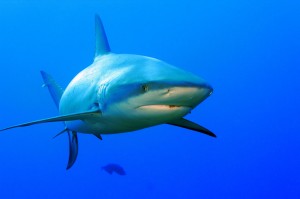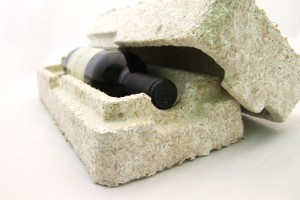

Features
Biomimicry, Bioutilization, Biomorphism: The Opportunities of Bioinspired Innovation
Allison Bernett
Share
Learn more about our bioinspired innovation work and services by emailing us at [email protected] and reading our report, Tapping into Nature. Follow the conversation on twitter: @TerrapinBG | @NY_biomimicry | #TapNature.
That Trendy “Bio-” Prefix
You have probably stumbled across the “bio-” prefix in various design, technology and science blogs, indicating an idea’s biological roots. Biomimetic, biophilic, biomorphic, bioutilizating, bioclimatic, etc.–the “bio-” comes in many flavors, but it frequently denotes a deep conceptual backing. The use of the “bio-” prefix is new, but the approach is ancient. Humans have taken inspiration from nature’s remarkable forms, processes, and logic for millennia (cave paintings of animals, Leonardo da Vinci’s bat-like flying machines, and the Art Nouveau movement’s organic forms and lines). Recently, many researchers and designers have begun to use natural inspiration in interdisciplinary settings to produce robust innovation. How nature serves as a source of inspiration can vary; however, all bioinspired approaches have yielded useful, disruptive innovations and designs. Most importantly, the bioinspired innovation movement could offer resiliency to climate change, health epidemics and economic uncertainty in the form of energy- and resource-optimized products, processes and systems.
Why Nature?
Life has a headstart on human technology, existing on this planet for approximately 3.8 billion years. During this time, organisms have evolved survival strategies adapted to Earth’s wide array of environments. Natural selection ensures that these strategies are energetically and materially prudent, a critical distinction between many human-constructed systems. Any species that is wasteful, pollutes its habitat, or relies on limited, non-renewable resources cannot survive for generations–it must either adapt to the ecosystem’s constraints or go extinct through starvation and habitat destruction. Evolution has selected for species that sustain themselves through functional design and scrupulous habits, or in other words, it has selected for sustainability and functionality. Janine Benyus, the biologist best known for her impactful book Biomimicry: Innovation Inspired by Nature, put it best: “Life creates conditions conducive to life.” Biomimicry 3.8–established by Benyus and Dr. Dayna Baumeister–has identified “overarching patterns found amongst the species surviving and thriving on Earth.” Derived from strategies that have sustained life for billions of years, these patterns–or Life’s Principles–provide a framework for bioinspired projects, and serve as a measurement tool during design development.[1] Terrapin frequently uses these patterns when assisting clients in developing bioinspired technology.
Following these patterns to solve humanity’s similar problems will lead to optimized, sustainable solutions. Digging into nature’s library of strategies will show us a plethora of solutions that we have yet to discover ourselves. This library combined with adherence to life’s patterns and nature’s tenets of sustainability and functionality has already led to bioinspired innovation that generates breakthrough products, reduces costs, and optimizes material and energy use.
Sorting Out the “Bio-” Names
Bioinspired methodologies take many forms, especially as each designer, engineer, scientist, and innovator attempts to derive solutions that will be most impactful for the specific problems they encounter. Each approach has its merits and has produced useful, sustainable, and disruptive innovations.

Sharkskin’s unique aerodynamic and antifouling properties have inspired Sharklet antimicrobial surfaces and swimsuit materials. Copyright Kevin Bryant/Flickr.
Biomimicry, a widely recognized “bio-” approach, is the conscious emulation and translation of biological principles to yield solutions that adhere to biological principles. An excellent example of a biomimetic product is Sharklet™ Technologies, which is a surface that repels bacteria without the use of biocidal chemicals. Inspired by the antifouling properties of shark scales, the Sharklet™ surface has a unique microscopic diamond-patterned topography that prevents bacterial attachment. Since the surface does not actively kill microbes, it does not encourage dangerous bacterial resistance like antiseptics and other products do. Although applicable in many fields, Sharklet™ has focused on developing medical products, such as antifouling catheters, and antimicrobial surfaces for furniture.[2]

Ecovative’s mycelium-based packing material is also compostable. Copyright mycobond/Flickr.
While biomimicry focuses on the translation of biological principles into human-made technology, bioutilization directly leverages organisms or biological materials. Bioutilization is particularly useful in cases where replicating complex biological machinery or processes in our own technologies is unsuccessful, too time-intensive, or too difficult to be cost-effective. For example, Ecovative Design utilizes fungal mycelium (the vegetative portion of mushrooms and other fungi) to produce environmentally-friendly materials. Using mycelia and agricultural waste like corn stalks, Ecovative has developed a compostable material as an alternative to plastic foam and other environmentally-destructive synthetics. Mycelia are grown on the agricultural waste, forming a matrix that binds the fibers together and results in a solid mass. The mass is heat treated to stop the growing process and then is ready for use. Ecovative’s materials are used in packaging, building materials, and even surfboards, all with comparable performance and cost-competitiveness to other materials on the market.[3]

The biomorphic columns inside the SC Johnson and Son Administration Building help create a healthy, productive workspace. Copyright Jeff Dean.
Biomorphism is another subset of bioinspired innovation. Biomorphism mimics natural forms and patterns. It is commonly critiqued for its lack of adherence to biological principles, resulting in designs that do not necessarily perform better or that are sustainable. However, the psychological aesthetic impacts of natural forms should not be overlooked. Biomorphic forms and patterns are a key component of biophilic design, reducing stress and enhancing concentration due to their visual interest. An excellent example of impactful biomorphism is the “Great Room,” or the interior office space of the SC Johnson and Son Administration Building designed by Frank Lloyd Wright. Wright placed an array of striking dendriform or “tree-like” columns within this expansive, double story space, creating prospect and refuge conditions not unlike a savannah. The biomorphic columns have extremely slender shafts that terminate in large circular lily-pad-like capitols. Each worker has a desk underneath a column, allowing him or her to feel sheltered by the column’s broad capitol while being able to observe activities throughout the rest of the office. With Frank Lloyd Wright’s artful execution, the company benefitted greatly from the design of the building. Placing the majority of departments into one room reportedly improved the company’s office operations between 15% to 25% after moving into the new building. The employees also enjoyed the new space — one retiree later recalled that “everyone he knew was very happy with the building.”[4] Biomorphic inspiration can help create a more beautiful and healthful built environment.
The Need for Bioinspired Design
Although the specific methodologies vary, bioinspired approaches have consistently cultivated functional, sustainable, and stunning designs and products. Each approach has its merits and its pitfalls. In the end, though, classifying bioinspired ideas into these categories can be constricting. We should value any designs and innovations inspired by nature that adhere to the key natural tenets of sustainability and functionality, no matter the “bio-” label.
Nature provides an untapped source of disruptive innovation that could support the longevity of humanity. Global climate change, an increasing population, epidemic concerns, and economic booms and busts all threaten our future. With our current environmental, health and economic issues, we require a new, sustainable, functionally-driven approach, or perhaps the oldest one on Earth.
Sources Cited:
- “Life’s Principles.” Biomimicry 3.8. http://biomimicry.net/about/biomimicry/biomimicry-designlens/lifes-principles/
- “Non-toxic Anti-fouling Solutions: Sharklet.” Terrapin Bright Green. http://www.ny-big.com
- “Mushroom Materials.” Ecovative Design. http://www.ecovativedesign.com/mushroom-materials/
- Lipman, Jonathan. Frank Lloyd Wright and the Johnson Wax Buildings. Courier Corporation, 2003. pg. 94.
Useful Links:
- http://www.ny-big.org/
- http://www.terrapinbrightgreen.com/services/
- http://www.terrapinbrightgreen.com/blog/2014/06/biomimicry-photonics/
- http://www.terrapinbrightgreen.com/report/tapping-nature/
- http://biomimicry.net/
Spider silk (on the header and feature image) has remarkable strength and toughness, all while remaining biodegradable. Spider webs also have optic properties that inspired Ornilux Glass. Much research has been dedicated to replicating this unique biological material. Image copyright of Julie Falk/Flickr.
Filed under:
Allison Bernett
Allison Bernett is an associate project manager and the public relations coordinator for Terrapin Bright Green. She graduated summa cum laude from Washington University in St. Louis with a double major in architecture and biology. Allison’s interests focus on architecture, sustainability, and bioinspired innovation.
Topics
- Environmental Values
- Speaking
- LEED
- Terrapin Team
- Phoebe
- Community Development
- Greenbuild
- Technology
- Biophilic Design Interactive
- Catie Ryan
- Spanish
- Hebrew
- French
- Portuguese
- Publications
- Occupant Comfort
- Materials Science
- Conference
- Psychoacoustics
- Education
- Workshop
- Mass Timber
- Transit
- Carbon Strategy
- connection with natural materials
- interior design
- inspirational hero
- biophilia
- economics of biophilia
- Sustainability
- wood
- case studies
- Systems Integration
- Biophilic Design
- Commercial
- Net Zero
- Resorts & Hospitality
- Energy Utilization
- Water Management
- Corporations and Institutions
- Institutional
- Ecosystem Science
- Green Guidelines
- Profitability
- Climate Resiliency
- Health & Wellbeing
- Indoor Environmental Quality
- Building Performance
- Bioinspired Innovation
- Biodiversity
- Residential
- Master Planning
- Architects and Designers
- Developers and Building Owners
- Governments and NGOs
- Urban Design
- Product Development
- Original Research
- Manufacturing
- Industrial Ecology
- Resource Management
- Sustainability Plans
- Health Care
- Carbon Neutrality


